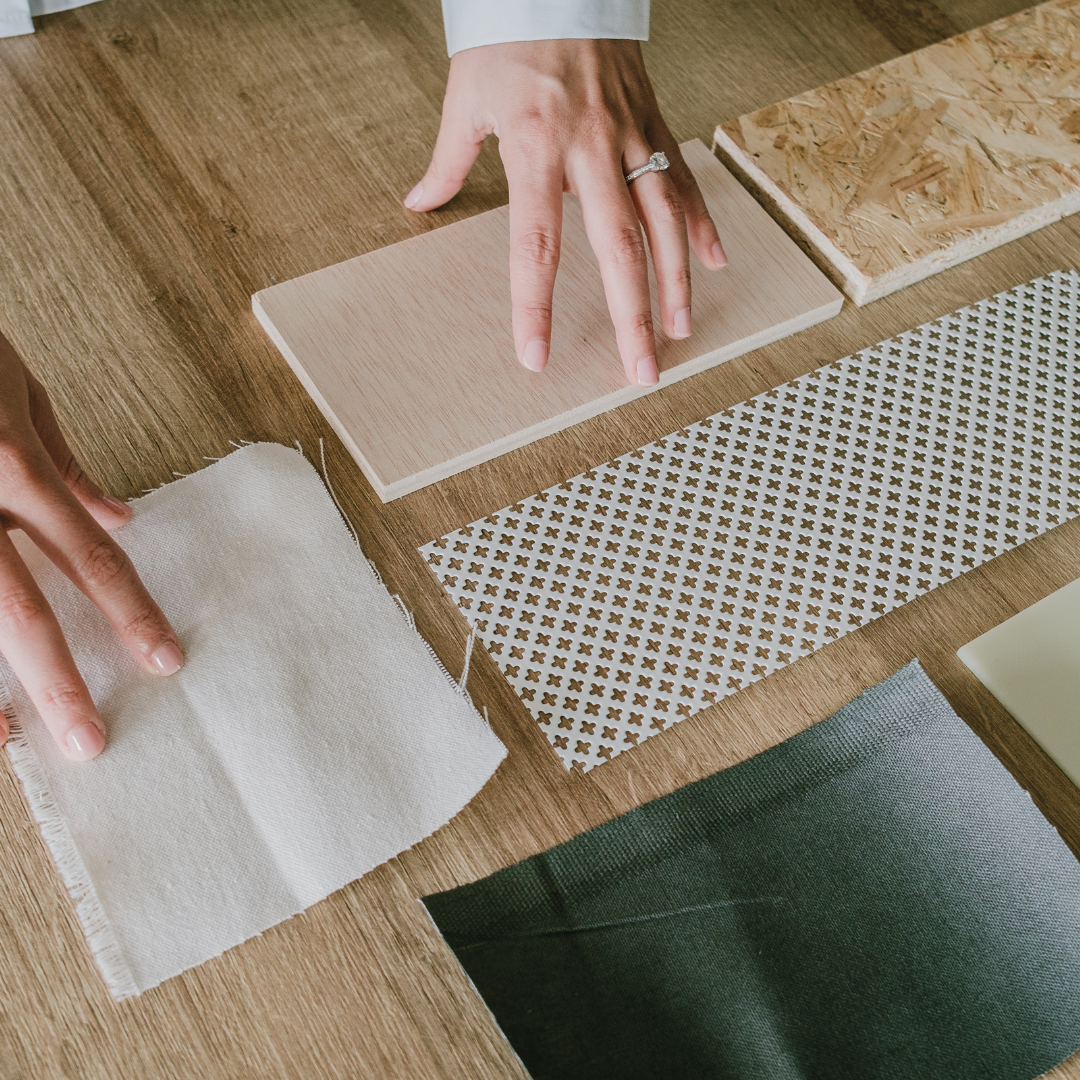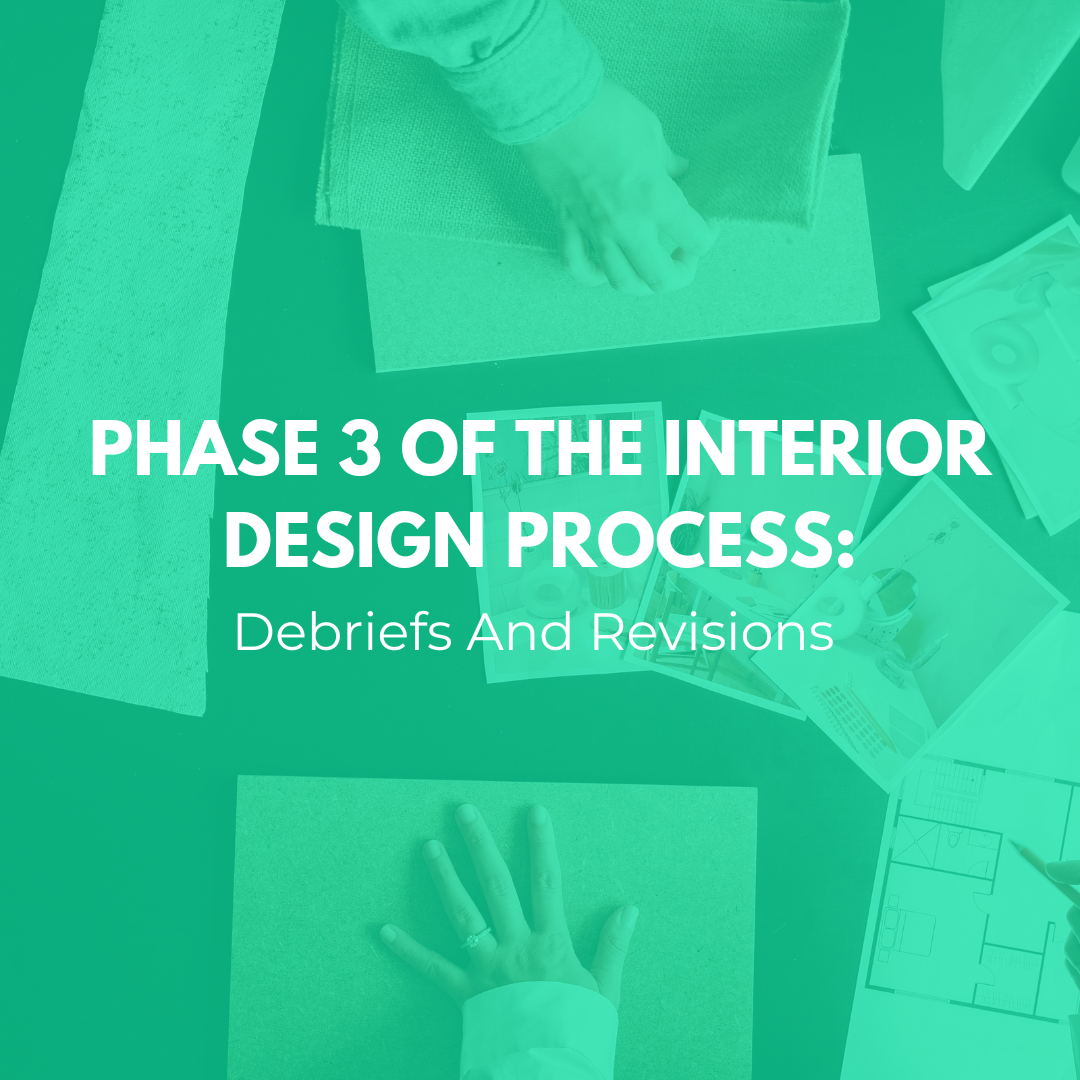Phase 3 of the Interior Design Process: Debriefs and Revisions
The 3rd phase of the interior design process is the debriefs and revisions phase. In this phase of the process your design concept is no longer abstract—it’s tangible, detailed, and actionable.
This stage of the process helps to ensure that your design aligns with your client’s vision, while addressing functional and aesthetic goals. It bridges the gap between ideation and execution, for a seamless transformation of ideas into reality.
In this article, we’re digging into the importance of the debriefs and revisions phase, as well as how to streamline this part of the process to be most efficient for you and your client.
Step 1: The Debrief

At this stage, the conceptual and schematic design phase is complete, and the elements of design have been crafted with precision. Now it’s time for a meeting with your client to present them with a fully realized design plan including specific products, accurate dimensions, and all other essentials.
Take this as an opportunity to align with your client on every detail of the project. Present your selections such as furniture pieces, finishes, colors, space plans, and material specifications. Your client’s feedback is invaluable because no matter how thoroughly a design is crafted, the final say will always belong to the client.
This presentation should lead to an insightful conversation—not a one-sided exchange. If your client doesn’t offer feedback immediately, we recommend inviting them to share their thoughts. Consider asking them probing questions to help identify sticking points or areas requiring modifications, whether these include budget concerns, alternative sourcing needs, or general design aesthetics.
When clients actively contribute during this phase, it helps the rest of the process move forward much more smoothly.
Step 2: Revisions

Your client’s feedback is also the cornerstone of the revisions phase. Balancing their requests with your expertise allows you to fine-tune every detail, making sure the original concept evolves into a design that truly works for your client.
This phase often involves one primary round of revisions, but the number of revisions should be clearly outlined in the scope of work and contract. If this is not stated clearly in writing, clients can delay the process with indecision, shopping on their own, multiple rounds of revisions, etc.
During the revision phase adjustments are made based on the client’s requests. While every project is unique, certain types of revisions are common during this portion of the design process. These may include:
Sourcing Additional or Replacement Items
Sometimes a client may find certain selections off-target in terms of style, comfort, or purpose. This may require you to source additional options or replace items so the design plan fulfills their expectations. This can include anything from swapping out furniture items to finding alternative materials or finishes.
Updating Space Plans and Specifications
Space planning is a critical component of an interior design project. During the debrief, a client may ask for another option, such as more seating options for entertaining. In this case, revisions will involve improving the space plan to better meet their preferences and needs. Specifications will also need to reflect updates made during this step.
Refining Presentations
If revisions impact key details of your design plan, your presentation materials will need to be updated accordingly. This includes plans, renderings, mood boards, and tear sheets. Presenting clients with polished materials will help them to feel more confident in your process.
Step 3: The Final Design Project Debrief

Once changes are implemented, a final presentation meeting with your client is encouraged to reaffirm alignment and secure their approval. This step helps to make sure there is no uncertainty before the project enters the execution phase.
During this meeting, all updated materials and recommendations should be reviewed in detail. Clients should see how their feedback has been incorporated and any revisions have successfully improved the overall design plan.
By the end of the presentation, the client should feel confident that the project is moving forward as envisioned. At this point, you can coordinate necessary communications with contractors and begin submitting tear sheets for approval.
Project Management: How to Streamline Debriefs and Revisions
For many interior designers, the revisions phase can be both exciting and demanding. While revising plans to meet client feedback is crucial to producing exceptional results, it can also become time-consuming, especially when juggling multiple projects. Fortunately, you don’t have to tackle this step in the design process alone.
At 4Dbiz, we specialize in providing fractional virtual design assistance tailored to meet the unique needs of interior designers. Whether you need help sourcing replacement items, updating space plans and specification packages, or fine-tuning presentations, our virtual design professionals are here to support you. With skilled assistants ready to step in, you can delegate these tasks as needed while focusing on other priorities.
Outsourcing to our team is not only efficient but also cost-effective. Unlike hiring in-house design support, our fractional services allow you to scale up or down depending on the demands of each project. By leveraging our virtual assistance, you gain access to high-level expertise without overstretching budgets or timelines.
Ready to simplify the debriefs and revisions phase of your design process? Let 4Dbiz help you streamline tasks, enhance productivity, and deliver outstanding results for your clients.
Book An Intro Call To Learn More About Our Virtual Interior Design Assistance

